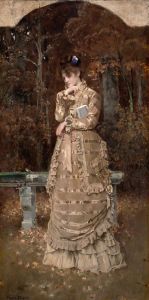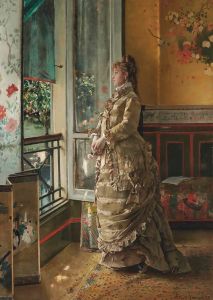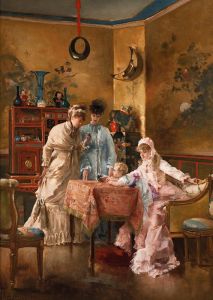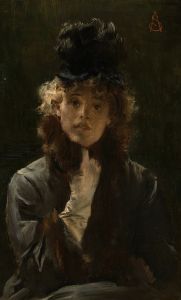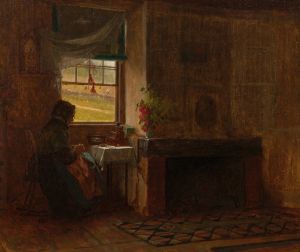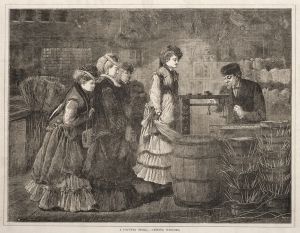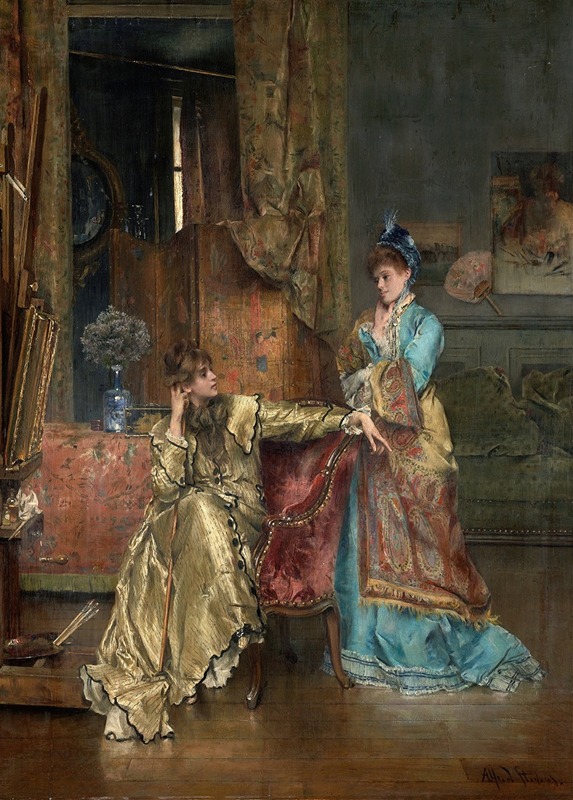
The Visit
A hand-painted replica of Alfred Stevens’s masterpiece The Visit, meticulously crafted by professional artists to capture the true essence of the original. Each piece is created with museum-quality canvas and rare mineral pigments, carefully painted by experienced artists with delicate brushstrokes and rich, layered colors to perfectly recreate the texture of the original artwork. Unlike machine-printed reproductions, this hand-painted version brings the painting to life, infused with the artist’s emotions and skill in every stroke. Whether for personal collection or home decoration, it instantly elevates the artistic atmosphere of any space.
Alfred Stevens, a prominent Belgian painter of the 19th century, is renowned for his exquisite portrayal of women and domestic interiors. One of his notable works, "The Visit," exemplifies his mastery in capturing the elegance and subtlety of bourgeois life during the period. Painted in the 19th century, this artwork reflects Stevens' keen observation of social interactions and his ability to infuse his subjects with a sense of grace and dignity.
"The Visit" is a testament to Stevens' skill in rendering the intricate details of fashion and interior design, which were significant aspects of his oeuvre. The painting typically features women dressed in the opulent attire of the time, showcasing the luxurious fabrics and elaborate designs that characterized the fashion of the era. Stevens' attention to detail is evident in the meticulous depiction of textures, from the sheen of silk to the delicate lace trimmings, which adds a layer of realism and depth to the composition.
The setting of "The Visit" is an elegantly furnished interior, a common theme in Stevens' work, reflecting the artist's fascination with the domestic spaces of the upper-middle class. The room is often adorned with tasteful decorations, including ornate furniture, rich draperies, and decorative art pieces, which together create an atmosphere of refinement and sophistication. This focus on interior spaces not only highlights Stevens' technical prowess but also serves as a backdrop that enhances the narrative quality of the painting.
Stevens' portrayal of women in "The Visit" is particularly noteworthy. He captures the nuances of their expressions and gestures, conveying a sense of poise and introspection. The interactions between the figures are subtle yet telling, suggesting themes of social etiquette and personal relationships. This ability to convey complex emotions and interactions through composition and expression is a hallmark of Stevens' work.
In addition to its aesthetic qualities, "The Visit" offers insight into the cultural and social dynamics of the 19th century. The painting reflects the societal norms and expectations of the time, particularly concerning gender roles and class distinctions. Through his art, Stevens provides a window into the world of the bourgeoisie, highlighting both the beauty and the constraints of their lifestyle.
Alfred Stevens' contribution to the art world extends beyond his technical skill; his works, including "The Visit," are valued for their ability to capture the essence of an era. His paintings are celebrated for their elegance, attention to detail, and the subtle interplay of narrative and aesthetics. Today, Stevens is remembered as a key figure in 19th-century art, and his works continue to be studied and admired for their artistic and historical significance.
"The Visit" remains a quintessential example of Stevens' artistry, embodying the qualities that have earned him a lasting place in the canon of art history. Through this painting, viewers are invited to appreciate the delicate balance of beauty, narrative, and social commentary that defines Alfred Stevens' legacy.







